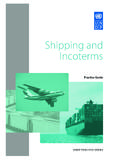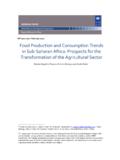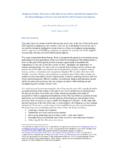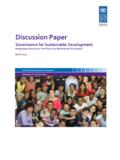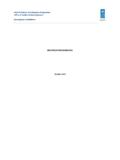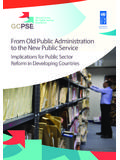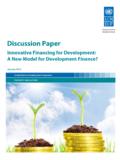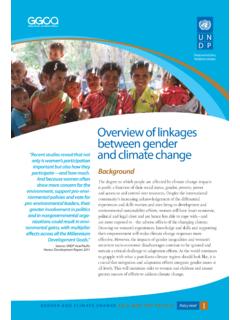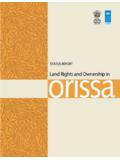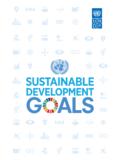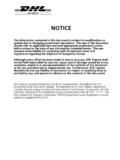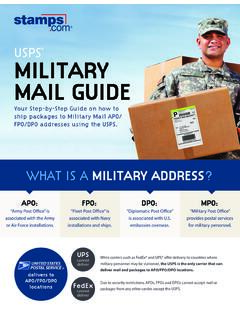Transcription of Shipping and Incoterms - undp.org
1 UNDP Practice SerieSPractice GuideShipping and IncotermsPractice GuideShipping and IncotermsGraphic Design, Layout and Print Production: Phoenix Design Aid A/S, Denmark. ISO 9001/ISO 14001/OHSAS 18001 on: This publication is printed on certified environmentally approved paper with vegetable-based inks. The printed matter is and Incoterms / Practice guideContentsintroduction 11 Shipping 2 Section 1 of these guidelines is intended for persons dealing with purchasing and Shipping , but it is recommended that persons at the receiving end also read it to be more familiar with how Shipping operates, its terminology and documentation. Chapter 1: Importance of Transportation and Summary 2 Chapter 2: Methods of Dispatch 2 Chapter 3: Selection of Method of Dispatch 7 Chapter 4: Packing Markings Addresses 8 Chapter 5: Parties Involved in the Chain of Transport Events 10 Chapter 6: Shipping Documents 11 Chapter 7: Forwarding Arrangements 14 Chapter 8: Shipping Instructions 15 Chapter 9: Distribution of Shipping Documentation 16 Chapter 10: Insurance Coverage 18 Chapter 11.
2 Insurance Claim 212 receiving 24 Section 2 will explain the steps to be taken for the withdrawal of supplies upon their arrival, and especially what to do when the consignment is not in good 1: Retrieval 24 Chapter 2: Receipt and Inspection 25 Chapter 3: Reporting and Claims 26 Chapter 4: Feedback and Cooperation 28 Chapter 5 Examples of Claim Letters 293 terms and glossary 34 Section 3 introduces Incoterms , UNCITRAL and contains a glossary of the most common terms used in the Shipping 1: Incoterms 34 Chapter 2: Uncitral 44 Chapter 3: Glossary 46 UNDP Practice Series, Shipping and Incoterms , November 2008 This Practice Guide is protected by international copyright laws.
3 The prior written consent of UNDP Procurement Support Office is required for the reproduction (in any form) of the whole or any part of this further information please contact: UNDP Procurement Support Office (PSO), Bureau of Management. E-mail: Website: and Incoterms / Practice guide1 Shipping and Incoterms / Prac tice guideIntroductionThis practice guide is designed for those working in UNDP who are interested in gaining an over-view of appropriate Shipping arrangements, documentation and Incoterms . Additionally, those working in functions that include close interaction with the procurement or logistics function, such as programme staff who would like a closer understanding of Shipping activities, would find this practice guide the topics covered are the principles of effective Shipping arrangements, methods of miti-gating risks and an overview of the options available for optimizing the organization s logistical activities and the capability to plan.
4 Implement and evaluate a transportation exercise appropri-ate to the value/risk of the goods being this GuideThis guide offers an overview of the different modes of shipment available to determine the appropriate logistical arrangements for a range of requirements;Gives an introduction of a broad understanding of the need for insurance and the types of coverage available;Explains the pros and cons of different Incoterms and the appropriate use of Incoterms ; Discusses loss prevention, means and actions to put in place to minimize or prevent loss and effective packing and marking;Describes customs procedures; Discusses the choice of appropriate Shipping methods depending on various factors, includ- ing, cost, frequency / regularity, reliability and speed required; andExplains the functions of Shipping documents, including Air Waybill (AWB) and Bill of Lad- ing (B/L).
5 2 Shipping and Incoterms / Practice guide1 Shippingchapter 1 importance of transportationThe aim of this section is to provide guidelines for procurement and Shipping by providing gen-eral information on the mechanisms of transportation and their associated risks. This guide pro-vides basic facts about Shipping , and thus detailed legal aspects of trade and answers to specific problems that could arise are beyond the scope of the publication. It is hoped, however, that the guide will be useful to procurement staff in their day-to-day is the essential link between supplier and receiver, and the aim is to receive the goods in good condition, when and where they are needed.
6 This necessitates close collaboration be-tween procurement staff, the supplier and the transporter. The journey involved, whether over land, sea and/or air, may introduce certain costs and risks that can be mitigated by appropriate methods of dispatch, insurance coverage, suitable packaging instructions, and by considering the roles and responsibilities of the parties involved in the chain of transport events up until final delivery to the client. Various aspects of these problems are examined in the following 2 Mode of transportationVarious modes of transportation are available for transporting goods between or within countries by either air, sea or overland by road and rail.
7 In and Shipping are service units whose efforts must be devoted to help end-users. Receipt of supplies in good order is the target. A successful insurance claim does not compensate the inconvenience caused to end-users by arrival of supplies in bad order and therefore, managing risks comes before container services, full load, whenever possible, as this offers the best protection. Give clear Shipping instructions to secure the best possible handling. Do not send any supplies, even post parcels, without a timely notification and supporting documents being issued to the of transportationSea-freight Containerized, Full Container Load (FCL) / Less-than-full Container Load (LCL) Conventional (general cargo) Charter Shipping (bulk) Roll on (RO)/Roll off (RO) Vessels and LASHING Airfreight Overland / Truck / Rail Post Multimodal Transportation 3 Shipping and Incoterms / Practice guideSea-Freight containerized A standard container is a metallic box (steel or aluminium) with a double door at one end and in which general cargo can be safely loaded and transported.
8 Most international con-tainer traffic is carried in either 20 foot or 40 foot containers. Container dimensions are standardized and the maximum load is described in the table Freight Containers20 foot container40 foot containerCapacity (m )3060 Internal dimensions L x W x H (meters) x x x x W x H (meters) x x load (tonnes)1830 Sea freight capacity, dimensions and loadThere can be slight variations in these measurements depending upon the maker (always give exact measurements of large, individual packages). Containerized shipments are either Full Container Load (FCL) or Less than a Container Load (LCL): FCL is a door to door concept.
9 Containers are sealed at origin and opened at the destina- tion, offering high security and minimum handling. The majority of containerized UN cargo is FCL. LCL is a Terminal to Terminal concept. When a shipper does not have enough cargo to load a container to its full capacity, a forwarder running a consolidated container service may be contacted and allowed to add, using one container for several loads originating from vari-ous shippers. This is of greatest interest in the case of shipments to land-locked countries, as the use of containers practically eliminates the risks of loss, pilferage and delays in the port of unloading for transhipment over land.
10 However, if reloading is required before the final destination, this method offers lower security, a higher risk of theft or damage during loading/offloading and/or exposure to adverse weather loading and stuffing of a container to safely secure the cargo preventing movement and/or collisions inside the container is a specialized procedure that is normally carried out by profes-sionals to reduce the risk of cargo damage. Whether the buyer or the seller carries the cost and risk Method of quoting freight rates Case: Assuming that an ocean carrier or a freight consolidator offers an exporter $65 W/M (weight or measurement) for the shipment of 665 cartons of product DX.
